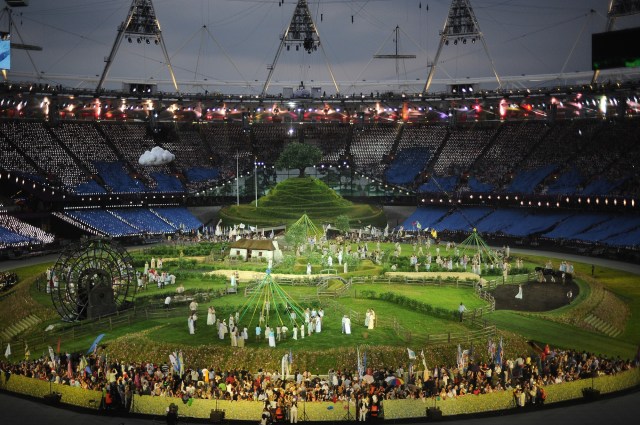Anthony Devlin/PA Archive/PA Images

Did you know that between 1970 and 2015, the United Kingdom destroyed 56% of its listed historic buildings?
Thousands of churches, castles and country houses: all of them demolished in the name of progress. It’s truly scandalous – or at least it would be, if it were true. In fact, since 1970, we’ve done a reasonable, if not perfect, job of preserving our architectural heritage.
Sadly, the same can’t be said about our natural heritage. I took the 56% statistic, above, from a piece in the Guardian by Michael McCarthy – and it applies not to old buildings, but to farmland birds:
“Most notable is the case of farmland birds, which by the government’s own admission declined by 56% between 1970 and 2015; it is estimated this represents a loss of at least 44 million individuals. Over huge swaths of the land, once beloved species such as the lapwing, the spotted flycatcher, the cuckoo and the turtle dove… have simply vanished.”
And it’s not just birds:
“in the past 50 years in Britain, through the intensification of agriculture, we have destroyed well over half of our biodiversity, and the populations of birds, butterflies and wild flowers that once gave the landscape such animation and thrilling life have been utterly devastated – the figures are there…”
“…the fields may still look green in spring, but it is mostly lifeless scenery, apart from the pesticide-saturated crops: it is green concrete.”
In what is supposed to be an age of environmental awareness, McCarthy is struck by our failure to recognise the scale of destruction:
“Yet its most remarkable aspect is this: people still do not perceive it. In the past decade, specialists in conservation have come to understand the magnitude of the loss, but for the public at large, and indeed for most politicians, it is simply not on the radar; we are faced with a sort of mass cognitive dissonance, a nationwide unawareness of what is obvious.”
I was lucky enough to grow up in the High Weald, an Area of Outstanding Natural Beauty in south east England. I’ve spent countless happy hours wandering along its sunken lanes and branching footpaths… and yet never quite shaking off a sense of eerieness.
That might seem odd because the Weald is a soft and gentle country, a place of rolling hills and wooded valleys. However, it also a graveyard. Like most of rural England, it is landscape cleansed of its wildlife by decades of agricultural intensification – and, before that, centuries of persecution.
Elsewhere on UnHerd this week, Liam Halligan sets out the case for more housebuilding. That will require that we free up more land for development. The nimbys will cry out ‘save our countryside!’, but the countryside as a living landscape was lost a long time ago. Now, though, we have a chance to strike a grand bargain – to sacrifice a small part of England’s dead acres and, in return, embark upon a programme to restore life to the rest.
And, as Michael McCarthy says, there is hope:
“Can anything be done to get us off the road to biodiversity oblivion? The perhaps surprising answer is that yes, it can. We can reorder the basis of our farming, and here we stand at a major crossroads, because that is what the present Conservative government has just promised to do. On 11 January it launched a 25-year environment plan, and followed it up on 27 February with a consultation on the future for food, farming and the environment…
“…you only have to read the documents to see that this is in no way a political stunt, a crude photo-op like David Cameron with his huskies in the Arctic. These are proposals that have been deeply thought through.
“As they stand, they’re great. The principal problem will be holding the government to them.”
The killing of the British countryside cannot entirely be blamed on the EU’s Common Agriculture Policy. But with Brexit, what we can say is that there is now no excuse.
Should we choose, we can regenerate habitats, repair ecosystems, reintroduce species and restore the countryside as our ancestors knew it.
This is a Conservative government; it must live up to its name.










Join the discussion
Join like minded readers that support our journalism by becoming a paid subscriber
To join the discussion in the comments, become a paid subscriber.
Join like minded readers that support our journalism, read unlimited articles and enjoy other subscriber-only benefits.
Subscribe